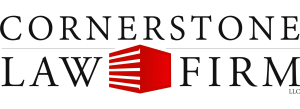Do I have to list all my creditors when I file for bankruptcy?
When filing for bankruptcy, a consumer is required to list all their creditors in their bankruptcy petition and schedules. This includes creditors for secured debts, such as a mortgage or car loan, and unsecured debts, such as credit card debt or medical bills. Failing to list a creditor can have serious consequences, including having the debt excluded from the bankruptcy discharge and, therefore, collectible by the creditor after the bankruptcy.
Creditors whose debts are not dischargeable must also be listed on the bankruptcy petition and schedules such as student loans, child support, and alimony.
Creditors must also be listed even in cases where a consumer may wish to continue making payments on a debt outside of the bankruptcy case, such as a filer wishing to keep their car and continue making payments on the car loan. The same is true if a consumer wishes to pay back an otherwise dischargeable debt after the bankruptcy case is discharged, such as voluntarily paying back a loan from a family member or friend.
It is important to note that if a creditor is excluded from the bankruptcy petition, the consumer may still be responsible for repaying the debt. Excluding a creditor from the bankruptcy petition does not discharge the debt, and the creditor may still be able to collect the debt outside of the bankruptcy case.
In summary, a consumer is required to list all their creditors in their bankruptcy petition. If a consumer excludes a creditor from the bankruptcy petition, they may still be responsible for repaying the debt outside of the bankruptcy case.
It is vital to consult with an experienced bankruptcy attorney about your specific situation. If you’re facing debts that you cannot pay and wish to consult an attorney about your options, call Cornerstone Law Firm and speak with one of our attorneys about how your debt should be handled.



